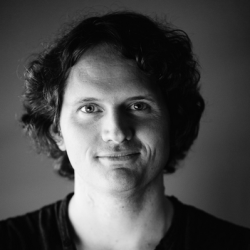
For several years now, Ezer Kang (PhD ’99) has been studying people suffering from both poverty and HIV around the world. More specifically, the associate professor of psychology at Howard University in Washington, DC has investigated how community interactions in the context of poverty influence the mental and physical well-being of people living with HIV. His research has led him to places such as Rwanda to work with survivors and perpetrators of the 1994 genocide, and to Nigeria to study accessible mental health treatment for children and adolescents. An unexpected result of Ezer’s work has been an increased awareness of the current divide between the American church and the LGBTQ community. That division was made abundantly clear for him in a surprising place: a medical clinic in Delhi, India, called Shalom.
Ezer started partnering with Shalom after visiting the clinic in 2011, when he watched how the team there serves people living with HIV. Central to the mission of Shalom is a commitment to provide preferred, dignity-bestowing treatment to members of society who are vulnerable to marginalization, following the example of Jesus. He was so impressed and moved by their work that he began to collaborate with them on substantial research projects: creating a mental health program that can be facilitated by community health workers; developing ways for parents to tell children about their HIV status in a careful, systematic, and sensitive manner; and improving mental health among HIV-positive women by improving their economic life, thus alleviating depression. Dr. Savita Duomai, the director of Shalom, and her team then piloted a program called Kiran, which trains women with HIV in a trade. They also created a program to examine how hijras and kotis—both sexual minorities in India—wrestle with gender stigma, HIV stigma, and poverty, in order to test the theory that the more stigma a person has to deal with, the more challenging life is.
While Ezer continued to be inspired by the clinic’s outreach, he soon discovered that not everyone recognized the work of Shalom as a form of Christian mission. He approached different churches and Christian individuals in the US about supporting Shalom, but they were wary about the clinic’s work with transgender people. “This surprised, confused, and—frankly—angered me,” says Ezer, because it was Shalom’s “high regard for the gospel” that led to both their traditional views of gender and their serving transgender people with HIV. The Shalom team simply saw it as their duty to work with HIV patients who came into their clinic in need of care because they weren’t being cared for in government hospitals. “As a faith-based clinic they feel the need to treat them with compassion regardless of who they are, just like the Gospels instruct,” Ezer says. Considering that, and thinking about the hesitation of the Christians he sought to support the work, he was left to wonder, “What was the tension?”

Fueled by his curiosity and his anger about the reaction of those churches, Ezer decided to write an article entitled “Conservative Protestants and Engagement with Sexual Minorities Living with HIV: The Role of Disgust and Recategorizing Contact,” which was published in the Journal of Mental Health, Religion and Culture (2019). “I came across the idea of moral contamination,” Ezer says of his research for the article. “It’s this idea that, similar to sexual disease, where you are afraid of catching a virus or being infected by another person, there’s this fear of moral contamination—that through proximity, you might catch what they have.” His effort to explain the idea of moral contamination led him to the construct of disgust. “The other person disgusts you for some reason and because of that, you are afraid to be in contact with the person, to be near the person,” he says. “Because if you are in contact with the person, they will contaminate you—not physically but morally.” Putting it in the context of Shalom’s work, he continues, “Simply treating or being close to a transgender person, a hijra or koti, will infect your theology; it will make you lean left.” Ezer finds that this assumption also shows up in his daily work, as many people assume he holds a certain position on sexuality because of his work with persons living with HIV. “It’s a very reflexive emotion that’s intuitive, but it doesn’t make sense at all.”
Writing the article was cathartic for Ezer because it gave language to what made him so angry. It also triggered something: “In many ways,” he says, “I’m just as culpable of what I’m critiquing certain conservative Christians on, because I can just as easily regard them with disgust because of our different views.” In the US we can get away with distance, he points out, wondering what it might be like if he intentionally attended a church that held views less aligned with his on particular issues. “I don’t have to agree with them theologically, but perhaps I would distance myself less,” Ezer imagines. “I would be more willing to listen to viewpoints that are not my own. I would perhaps be willing to genuinely have my mind changed through relationships.”
Through his research, Ezer observed that some conservative Protestants have certain reactions to sexual minorities not necessarily based on doctrinal issues but based on the knee-jerk response of disgust. But for the Shalom workers, consistent interactions with their clients challenged them, serving as a reminder that the core of the gospel message is to embrace others as Jesus embraced them—period. They struggled a lot in the beginning of the program with hijras and kotis living with HIV because the idea didn’t fit into easy categories. But that didn’t deter them from wrestling with the questions, and it didn’t stop them from continuing their work. “They really rolled up their sleeves and asked the hard questions. And those questions weren’t answered overnight,” says Ezer.
Savita, Shalom’s director, speaks very openly to the staff about her personal views on faith. She doesn’t impose it on anyone, Ezer has observed, and she is open about the things she is wrestling with and identifies the things she holds to be true. Says Ezer about Shalom’s approach: “At the end of the day, it always goes back to, we’re not sure about X, Y, and Z. But let’s remind ourselves of what we are sure of, which is that everyone who is living with HIV who walks through our clinic door, regardless of gender, caste, ethnicity—we treat them with worth and dignity. Everything else is superfluous.”

Ezer believes that the measure of success for Shalom is whether or not there is a willingness to engage meaningfully. The work itself allowed the team to deeply engage hijras and kotis, despite their initial uncertainties of how to do so. The more they spoke to their clients, learned about their stories, visited them, ate with them, and prayed with them, there was a “recategorization” of the kotis. When Ezer accompanied workers on home visits, he noticed the houses were very small and proximity was not conceptual, it was literal—and he believes even that was transformative.
While Ezer says he does see Christians in the US serving persons with HIV, he doesn’t see many embracing an ideology similar to Shalom. “I just don’t feel that discourse in our country regarding sexuality, or any of today’s divisive issues, is sustained enough where relationships are transformed,” he says. So he keeps returning to Shalom, to catch the vision once again of proximity, embrace, and dignity. “Some people go on retreats to be spiritually renewed,” Ezer says. “I visit my friends at Shalom to be spiritually rejuvenated.” Serving at the clinic has been a breath of fresh air for Ezer as he has observed the workers’ ability to embrace people, whoever they are. It has become a beautiful marriage of Ezer’s academic research and his understanding of faith.
“Here in the West, we live in such segregated communities, and disgust, when it emerges, won’t change unless there is meaningful interaction and contact,” he says. “I’m not talking about interacting once or twice a year at Thanksgiving or Christmas. I’m talking about continual, intentional engagement—the kind that doesn’t naturally occur. And I’m wondering if a community goes through that process, if that disgust will somehow be turned on its head.”
Reiterating that the opposite of disgust is embrace—a certain type of embrace that results from being close to someone—Ezer says, “Embrace doesn’t merely require a person’s views to change, it requires a person themself to change.”







